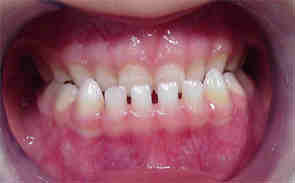Teeth are prone to different bad bacteria regardless of how strong and long lasting they appeared to be. Most of the time, teeth are jeopardized because of insufficient proper oral care such as daily brushing and flossing. One of the most popular yet perilous bacteria is dental plaque. Dental plaques are composed of 400 kinds of bad bacteria which destroy the teeth perilously. Needless to say, plaques are sticky trespassers which are evident on the teeth particularly on the biting surfaces. These can also be found in the spaces between the teeth and along its gum line. As outlined by research, dental plaques are a result of too much ingestion of sugar-content food and beverages.
These irritants are also present on starch foods. With that in mind, it pays to control eating too much cake, candy, chocolate bars and chips for it contains a pack of sugar. Sugar produces acids which destroy the teeth and gums. These acids are packed with numerous bad bacteria that generate hazardous effect to the teeth. If your teeth are full with plaques, contact emergency dental Mesa Arizona straight away. Generally, dental plaques are classified in different categories. These are categorized based on their relationship to different parts of the mouth and instances. In three categories, plaques are known to be as subgingival, attached or unattached and of course, plaques as an associate to a certain disease. Subgingival or also known as supragingival are referred to plaques connected to the person’s gum line. When plaques exist on the tooth surface, they are classified as attached or unattached. Last of all, if plaques are interrelated to a specific disease, they are recognized to be as health-associated. Plaques are well-known today.
Even when you were a kid, your parents used to talk and warn you about them. This is the primary explanation why preventing dental plaques are easy. When it comes to avoiding dental plaques, parents and most experts suggest the proper application of oral care regimen. Proper dental hygiene includes: *Daily brushing and flossing* – The most basic step to avoid dental plaques are proper brushing. When you brush your teeth using a soft-bristled toothbrush and fluoride toothpaste, you tend to eliminate hundreds of plaques around your teeth and gum line. Brushing your teeth means maintaining the wellness of the teeth. However, there are cases where plaques cannot be reached by an ordinary toothbrush. This where flossing helps. The primary goal of flossing is to eliminate the plaques on hard-reach areas. This can reduce the risk factors of dental plaques. *Regular dental checkups* – Obviously, brushing and flossing your teeth on daily basis are not enough.
Plaques like to hide which makes it pretty difficult to remove all of it. Hence, it is extremely important to attend regular dental visits. Experts said that every individual should meet their dentists every six months. This will help monitor their teeth and mouth. Regular checkups are also helpful in terms of alleviating and solving early signs of plaques. There are dental devices used by dentists which can detect plaques. *Balanced diet* – To most, sweets and chocolate bars are guilty pleasures. Of course, it is not right to deprive yourself. However, it is also advised to limit your own self from these foods as they are packed with sugars. Sugars are the optimum reason why bacteria exist which can cause dental plaques. With this, dental experts suggest balanced diet and restrict the number of snacks. Healthy foods include cheese, fruits and raw vegetables. Celery is also recommended as it can remove food particles and neutralize plaques. Apart from the aforementioned tips, using dental sealants can also be considered when preventing plaques. Sealants are made from thin and plastic coatings which are designed to protect the chewing surfaces from cavities. Anti-septic products are also used to protect teeth from bacteria.
These products are made from fluoride that can fight bacteria and inhibit plaques from accumulating. Dental plaques may result to tartars when left untreated. Tartars are irritants which are nearly impossible to remove by an ordinary toothbrush. Due to this, most specialists suggest professional aid to avoid severe problems over the long haul. Dental plaque build-up can cause gum disease and other periodontal diseases. When this happens, several health problems may take place. Recent studies show that periodontal disease may lead to heart disease, dementia, premature birth, rheumatoid arthritis and diabetes. If you want to maintain excellent oral health, start practicing right dental hygiene. Keep a good communication with your dentist and don’t forget to avoid bad oral habits. Bear in mind that plaques are controllable and there’s no reason for you to neglect it.
